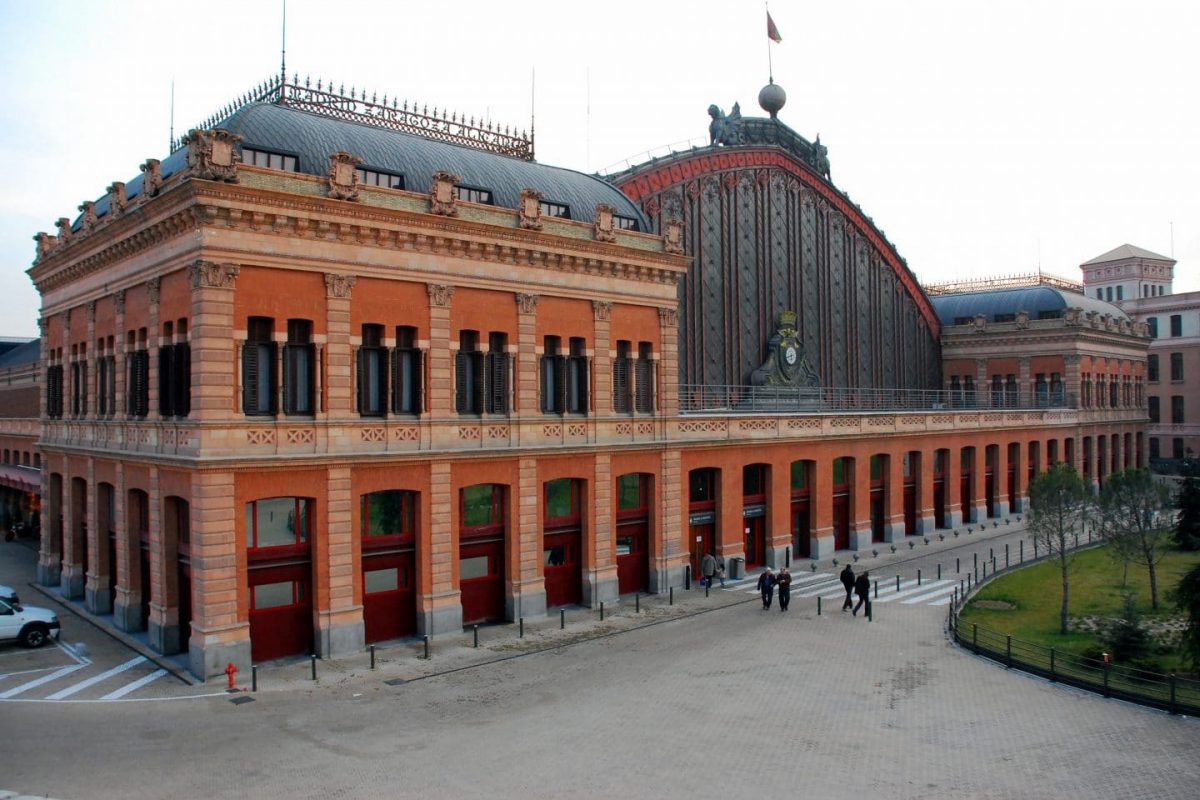Promain provide a huge range of infrastructure intumescent railway approved products from global manufacturers such as Sika, Sherwin Williams and PPG. Recently, PPG have specified and applied intumescent coatings to Atocha Railway Station in Madrid.
| The Client | ADIF (Administrador de Infraestructuras Ferroviarias) |
| Location | Madrid, Spain |
| Challenge | To provide long-lasting and reliable fire protection, corrosion protection and an attractive decorative surface for the enlargement of the railway station while the building was in use. |
| Solution | Application of PPG Steelguard FM 585 water-based intumescent coating and PPG Steelguard 2458 topcoat. |
| Benefits | Excellent protection and appearance of the steel structures. Overcoating with the PPG Steelguard 2458 topcoat can be done after only 30 minutes, enabling efficient production. |
| Result | The state-of-the-art railway station now has an enhanced protective coating system that also complements the aesthetics of the structure. |
Introducing Atocha Railway Station
Atocha Station in Madrid is the main hub of Spain’s high-speed rail network. Spain is ranked second in the world for the number of high-speed kilometres of rail track in service. Spain also were the first country in Europe to implement their 2,230 km of high speed track.
The original Atocha train station was almost completely destroyed by fire in the early 1890s. The new building was designed by architect Alberto de Palacio Elissagne. The impressive building was rebuilt incorporating predominantly wrought iron material. The most characteristic feature of the station is the recent enlargement combined with the nineteenth-century style façade.
The station has been partly transformed into a natural green house to make the traveller’s wait more comfortable. The impressive refurbished area covers 4,000 m² and is populated by over 500 species of plants.
Intumescent Railway Station Paint Requirements
After the most recent reconstruction, the station became the central hub for train passengers in Spain. The total number of commuters surpass 35 million per year, which is 2.5 times more than its previous capacity.

The construction requirements and building legislation for the station enlargement required a thin-film passive fire protection system. It was also a requirement that the application had a limited effect on passengers in this public space.
The intumescent railway coating would also have to meet all the fire protection, corrosion protection and decorative appearance specifications. The client required a sleek, modern look to the structure while meeting current construction requirements.
The Solution: Fire Retardant Spray Coatings
After research, the coatings contractor chose PPG to provide the paint. For this challenging project, PPG Steelguard FM 585 a water-based intumescent coating was therefore chosen.
Using water as liquid carrier, PPG Steelguard FM 585 utilise the absence of solvents in the atmosphere while work was ongoing. Due to the coatings ease of application, and lack of solvents, the contractors could quickly apply the product without disruption to users. In order to protect the steelwork to the required 30 minute fire rating, a combination of the PPG Steelguard FM 585 coating and PPG Steelguard 2458 topcoat was applied.
In addition, 2,000 m2 of galvanized steel structures in the main hall of the station were protected with the PPG SigmaCover 280 primer and PPG Sigmadur 1800 high-solids finish as the optimal anticorrosive and decorative coating.
In addition, all of the above products are available from Promain’s website via PPG manufacturer category page.
The Benefits of Fire Protective Coatings
 PPG’s Steelguard range is a complete set of intumescent coating systems for various grades of fire protection, including climatic exposure conditions. The Steelguard range also accounts for various application techniques.
PPG’s Steelguard range is a complete set of intumescent coating systems for various grades of fire protection, including climatic exposure conditions. The Steelguard range also accounts for various application techniques.
Promain provide a wide range of fire coatings suitable for the protection of railways, and large structures constructed with steel beams. Our intumescent railway coatings from PPG, Sherwin Williams and Bollom meet international standards in fire protection. Due to the high requirements for fire retardant coatings, each product undergoes a rigorous, exhaustive testing process.
Waterborne intumescent coatings comply with the most stringent environmental regulations, enabling application to take place in working areas – even while people are using the building.
How Do Intumescent Paints Work?
Intumescent paints protect substrates from the effects of fire in the short term. Fire protective paints are formulated to protect the coated substrate from fire for 30, 60 or 120 minutes. This depends on the grade of the paint. These intumescent coatings work by expanding like foam at high temperatures, from a very thin, lightweight coating. When fire attacks the paint, a thick foam-like layer insulates the steel to protect it. This insulation maintains the steel’s stability. Depending on the size and type of building, building control will specify a timescale to help to deliver the additional rescue time for evacuation that can prove decisive in terms of saving lives and property.
Therefore, intumescent railway station paint is a vital construction component. It is as relevant as ever since the Kings Cross disaster in 1987.
Conclusion
The project at Atocha Railway Station ran smoothly with no disruption to the station’s train schedule and passengers. The final outcome was an aesthetically pleasing finish that complemented the attractive style of the station. Afterall, crucially, the long-lasting and reliable fire protection provided by the PPG system will greatly improve the safety of the station and the public in the event of fire.
Finally, do you require intumescent railway coatings? Contact our specialist technical team. Therefore, make sure your property is safe for users by protecting assets with intumescent products. Furthermore, we regularly specify for a number of prestigious projects and companies including Transport for London (TfL) and London Underground.




